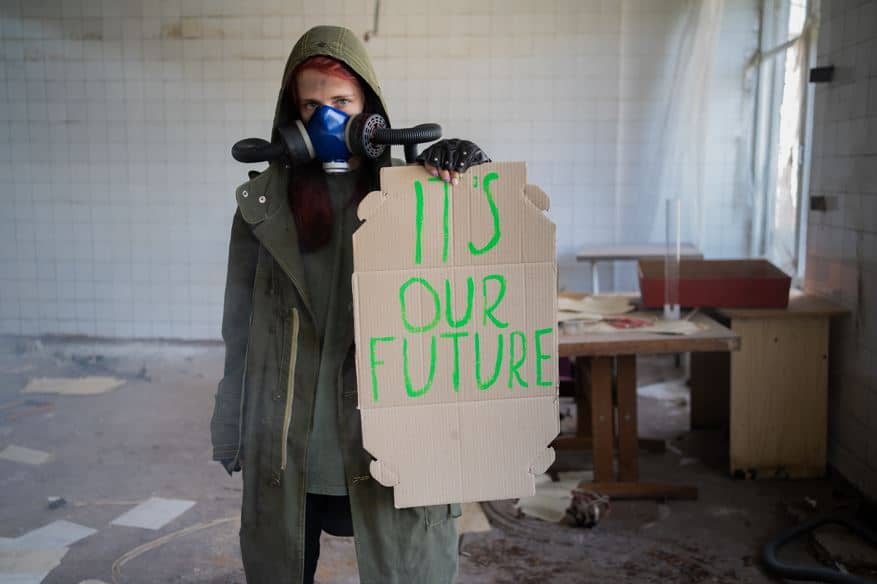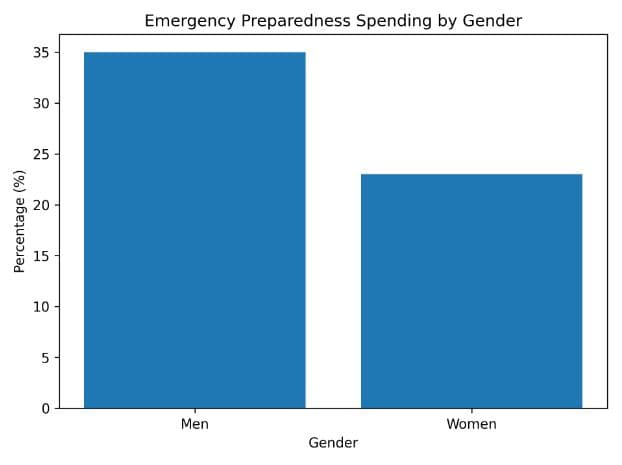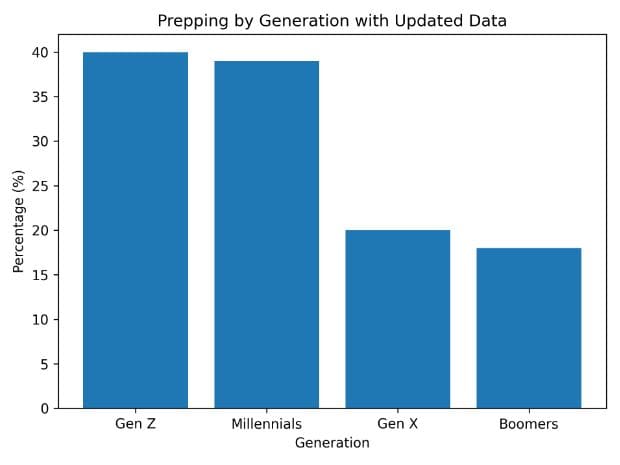Prepper Generations: who is preparing for disaster in the 2020’s?

Have you ever wondered which prepper generations have greater relevance these days?
For several years, in a not-so-distant past, survivalists were frequently stereotyped as a fringe group overly paranoid with a highly unlikely doomsday scenario like a zombie apocalypse or nuclear war.
But this reality has been evolving significantly over the last 15-20 years, shaped by major events like Hurricane Katrina, the 2008 financial crisis, or the COVID-19 pandemic.
Recent statistics show that many Americans, particularly Gen Z and Millennials, have adopted disaster preparedness practices at much higher rates than Baby Boomers and Gen Xers and began looking at survival kits as a sign of prudence and an example of responsibility.
Picture being part of these well-informed prepper generations, equipped with the latest survival gear, survival supplies, emergency preparedness plans, and the knowledge to protect yourself. These statistics reveal a growing movement towards self-reliance and resilience, offering a glimpse into the mindset of modern-day preppers.
Let’s explore the statistics and insights that highlight how different generations are preparing for the unknown and learn if you want to become a part of a community that values foresight, preparation, and the ability to face the future with confidence and not fear.
Doomsday preppers
So, in a way, you could say that doomsday prepping has surged into the mainstream consciousness. The prepper movement is characterized by meticulous food storage, stockpiling of medical supplies, and survival gear, and is driven by the anticipation of scenarios that can directly threaten your life or your families’.
Preppers spend a part of their disposable income to ensure that they have enough supplies and are ready to weather any storm, be it from natural disasters, an economic or societal collapse, or even civil war. In a way, it’s like an insurance, but of a type that insurance companies can’t really provide.
In 2022, according to a Finder survey, 29% of US adults spent a whopping $11 billion on emergency preparedness.
Men more likely to be preppers
The data surveyed from the American adult population suggests that men are more likely to engage in emergency preparedness than their female counterparts, with 35% of men answering that they have spent money over a 12-month for when SHTF, compared to just 23% of women.
This male demographic is more inclined to prepare and invest in survival kits, preparedness measures, and even fallout shelters.
Their focus is not just on survival but on self-defense and being prepared to protect any family member from the multiple threats that endanger modern society and this country.
For this reason, the top supplies men buy are food and water, survival kits and medical supplies (and then we have toilet paper… but I would prefer not to focus on that one).

Gen Z and Millennials most likely to be preparing for natural disaster
Interestingly, the younger generations, particularly Gen Z and Millennials, show significantly higher rates of disaster preparedness. And when I say significantly, I really mean it. Around 40% of Gen Z and Gen Y (Millennials) prepare for emergencies, while the rate of Gen X and Baby boomers is around 19%, so we could argue that the latter are the real Prepper Generations.
This shift reflects a growing awareness of climate change, economic collapse, and other societal challenges faced by modern societies.
Unlike the baby boomers, who may have focused on nuclear threats and the risk of an electromagnetic pulse, these younger preppers are more concerned with natural disasters and the impacts of climate change on everyday life, trying to make sure that they have the best chances to survive and thrive.

Origins of the Prepper Survivalist Movement
The prepper movement traces its origins back to the survivalist groups that emerged in the 1970s and 1980s. During this period, marked by the tension and uncertainty of the Cold War, these “retreaters” began to prepare for a variety of doomsday scenarios. Their concerns ranged from the fear of a monetary collapse to the specter of a full-scale nuclear war, a threat that dominated public consciousness due to the geopolitical tension between the US and the Soviet Union.
This early generation of survivalists was motivated by a desire to protect themselves and their families from the perceived imminent threats of their time. They sought to achieve a level of self-sufficiency and self-reliance that would enable them to survive in the face of catastrophic events, so they engaged in activities such as stockpiling food, gathering medical supplies, and acquiring survival gear.
The principles of these early survivalist groups laid the foundational principles for what would become the modern prepper movement. Over time the nature of the perceived threats changed, changing some of its focus to natural disasters, economic instability, pandemics, and social unrest.
Today’s prepper generations, while still keeping the core ideas of self-sufficiency and self-reliance, has expanded to include a broader cross-section of society. Modern preppers come from all walks of life and prepare for a wide array of potential scenarios. They share knowledge and resources, leveraging advancements in technology and communication to build networks and communities focused on mutual aid and preparedness.
Prepper generations Across the Modern World
In recent years, the practice of prepping has become a global phenomenon, touching every corner of the world, from remote rural areas to the heart of densely packed urban centers. This widespread adoption of the prepper lifestyle is a reflection of the growing awareness that our modern society faces multiple threats.
The advent of the internet and the rise of social media platforms have played an important role in the expansion of the prepper movement. These digital tools have connected people from different geographies to share knowledge and even offer moral support. Online forums, blogs, and social media groups have become key resources for those seeking advice on everything, from basic survival skills and emergency preparedness, to more advanced topics like off-grid living and self-sufficiency.
Additionally, the internet has democratized access to information, allowing individuals to research and learn about prepping at their own pace. Websites and online videos offer tutorials on how to purify water, preserve food, administer first aid, and protect one’s home during a crisis. E-commerce platforms and specialized online stores have also made it easier than ever to acquire survival gear, medical supplies, and long-term food storage solutions.
There is also a significant diversity in the modern prepper generations, ranging from those individuals who simply keep a few extra supplies on hand for emergencies, to those who dedicate a significant amount of time and resources to prepare for a complete societal collapse.
And we can also observe specialized groups like Urban preppers, who have adapted prepping practices to the specific challenges of living in a large city, focusing on issues like space constraints for storing supplies, to developing evacuation plans in those densely populated areas.
The 2010s marked a significant turning point for the prepper movement, with prepping basically going mainstream. The proliferation of reality TV shows and media coverage brought prepping into the living rooms of many Americans, demystifying the process and encouraging a broader segment of the population to consider their preparedness for future potential disasters.
Recently purchased survival gear
In 2022 alone (and continuing over the past year), almost a third of the adult population has purchased survival gear and supplies, signaling a shift in public perception that is continuing in a post-pandemic world.
From stockpiling food and water to investing in emergency medical supplies, the most recent American prepper generations are taking some proactive steps to ensure their survival in the event of natural disasters and societal upheavals.
Whether motivated by fear of an electromagnetic pulse or the tangible impacts of climate change, these individuals represent a cross-section of society united by a singular focus: to survive and persevere, no matter what the future holds.
Check out my other blog posts, and reach out if you feel like it.
FAQ – Frequently Asked Questions
Which Generation prepares more for disaster?
Gen Z.
Which celebrities are known to prepare for emergencies?
Famous household names like Joe Rogan, Mark Zuckerberg, Elon Musk, Ryan Seacrest, Kim Kardashian, Jamie Lee Curtis, Zooey Deschanel, and many others, are well known for prepping one way or the other, from food supplies to giant luxury bunkers.
